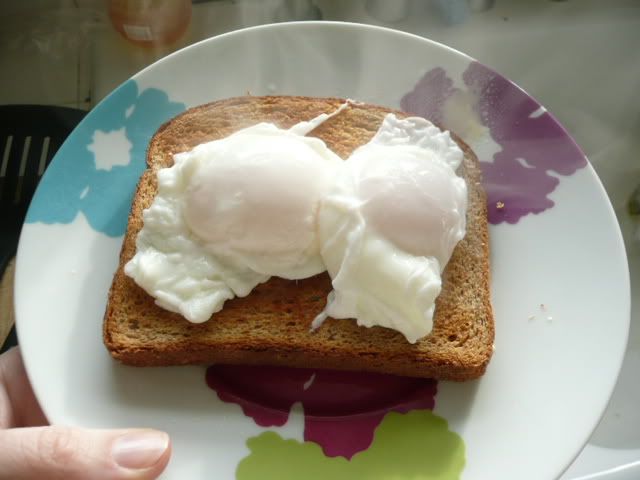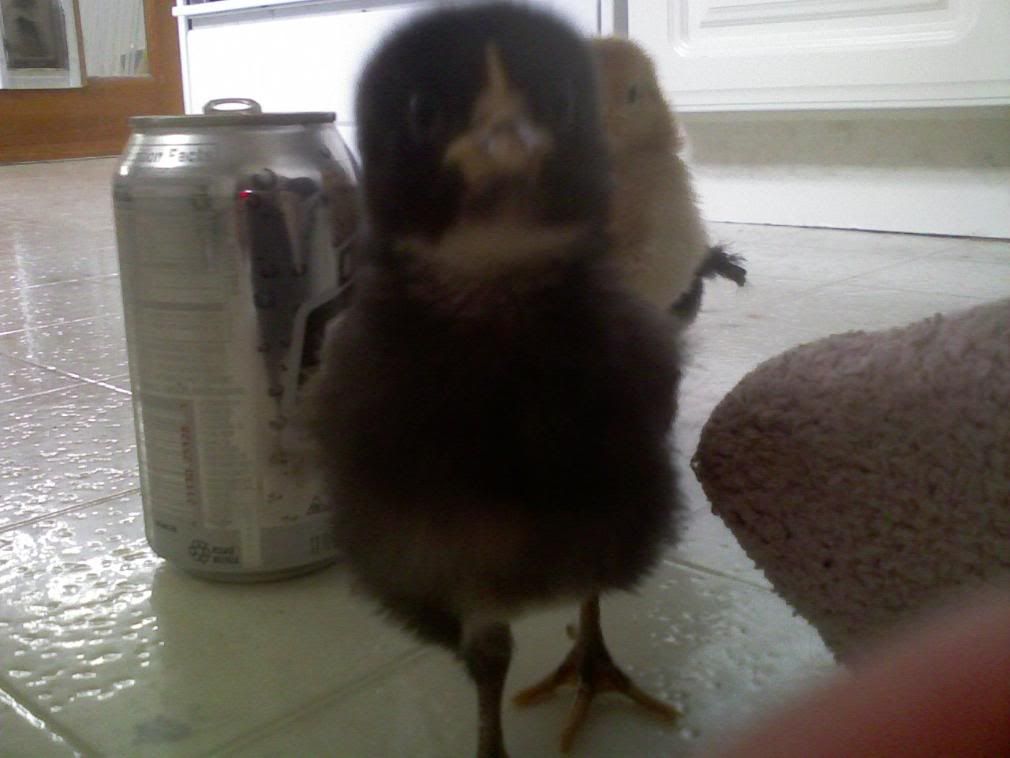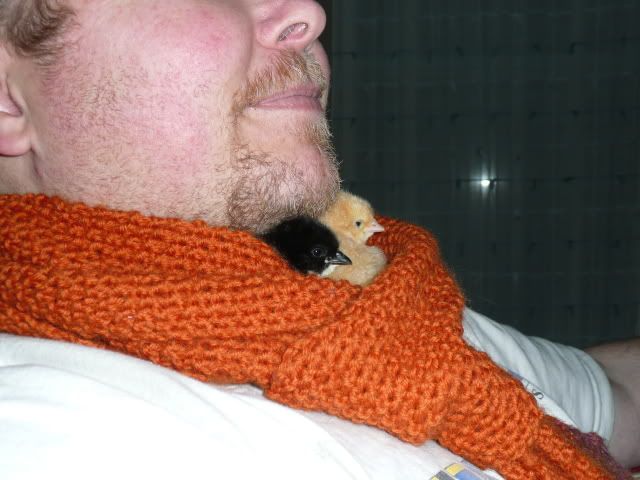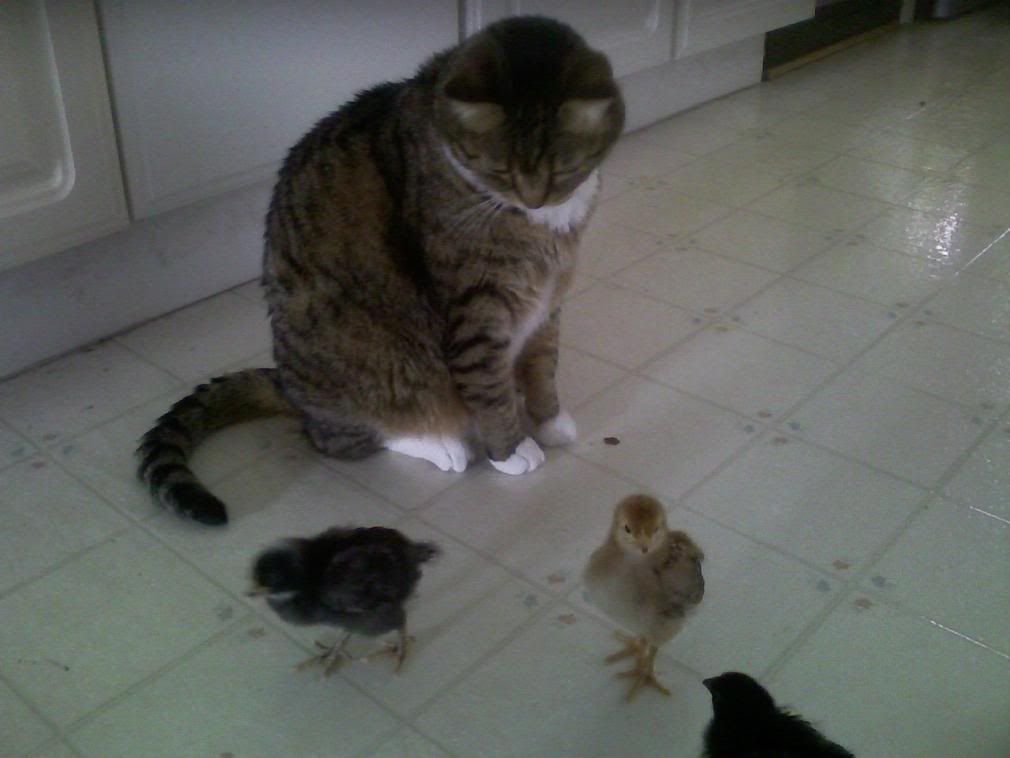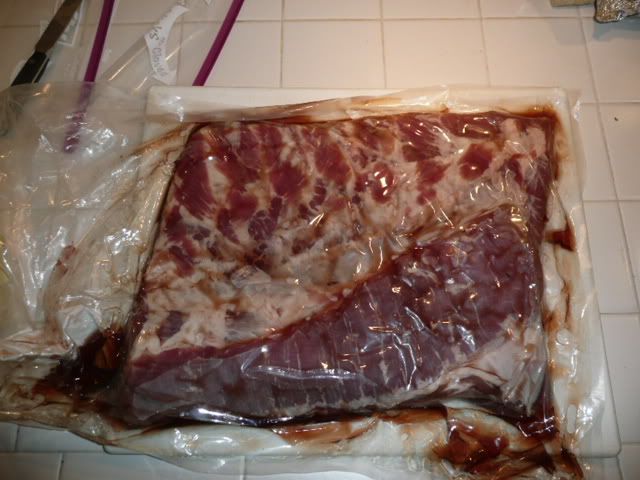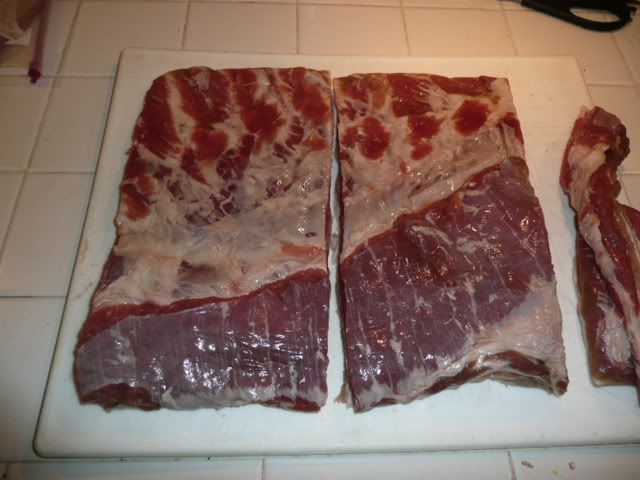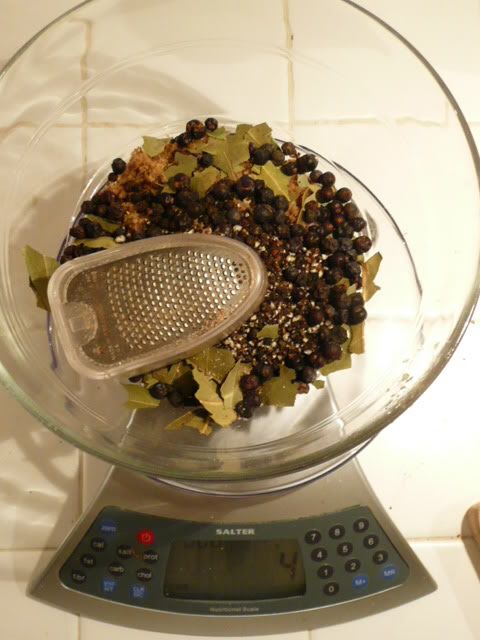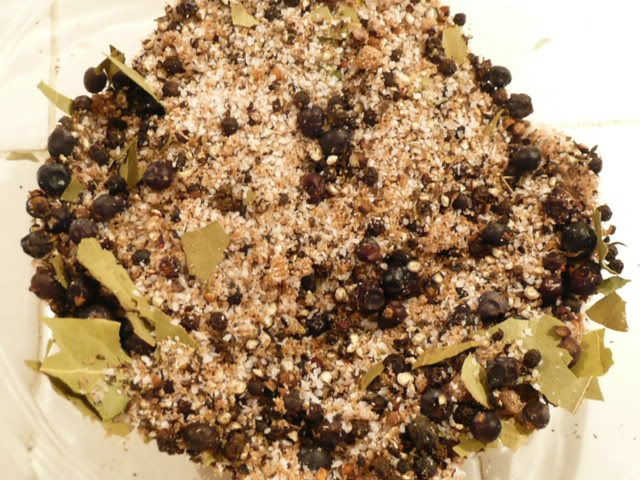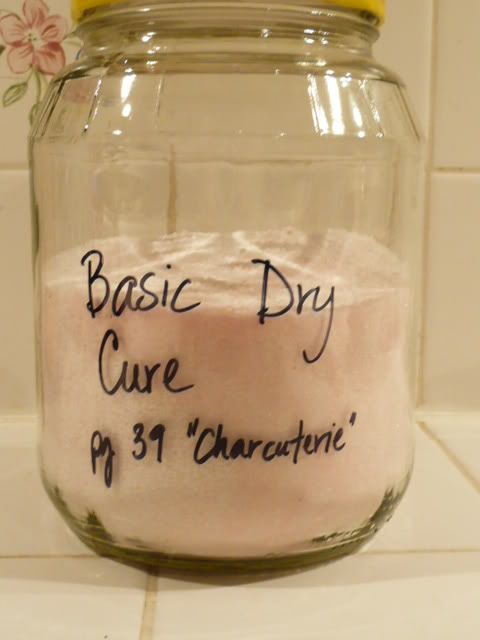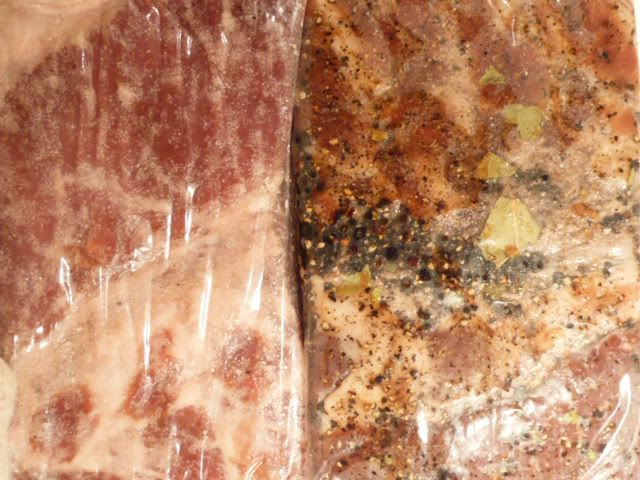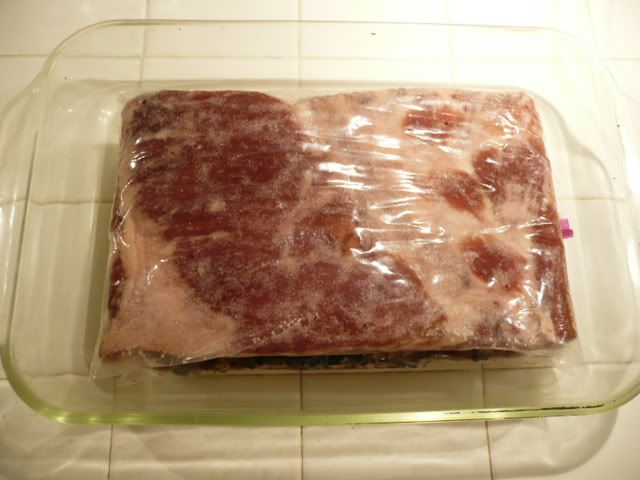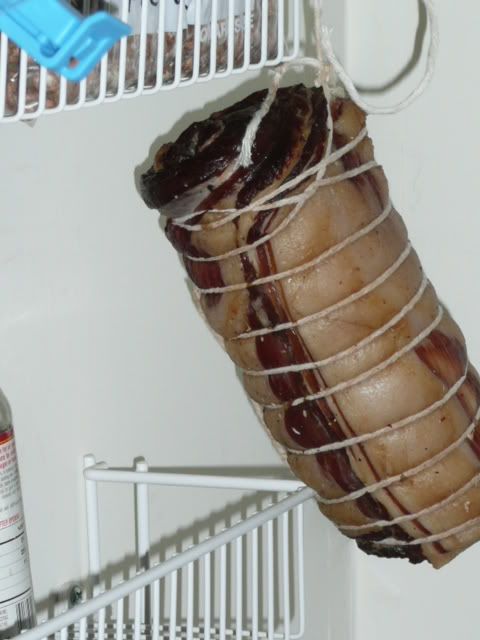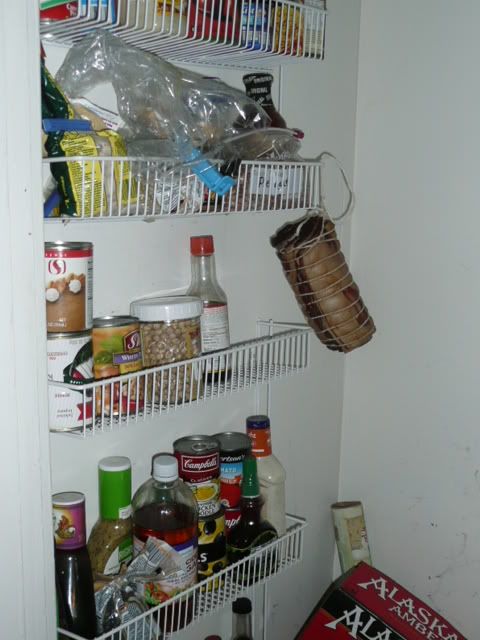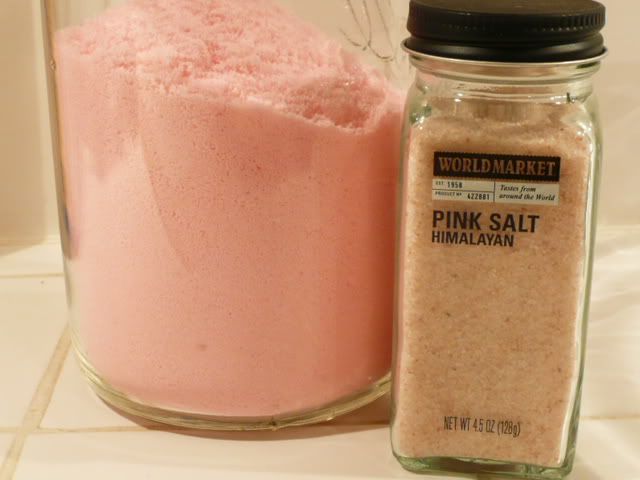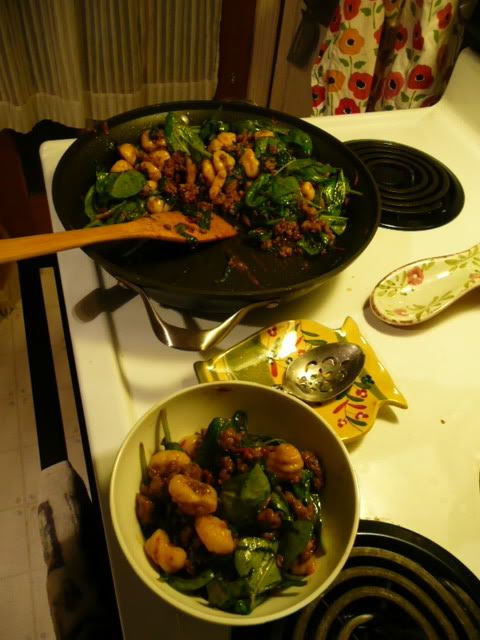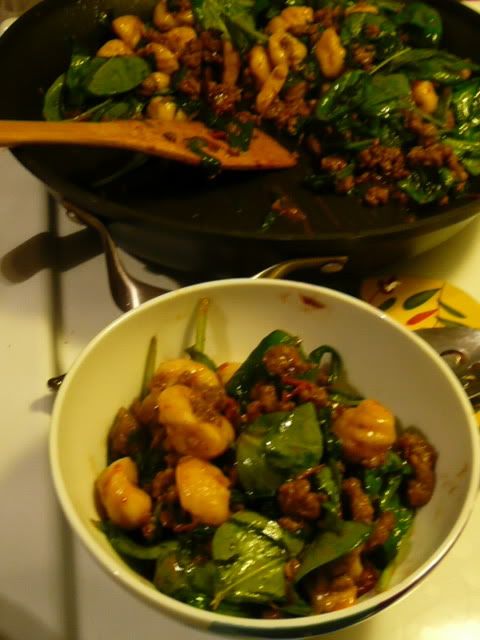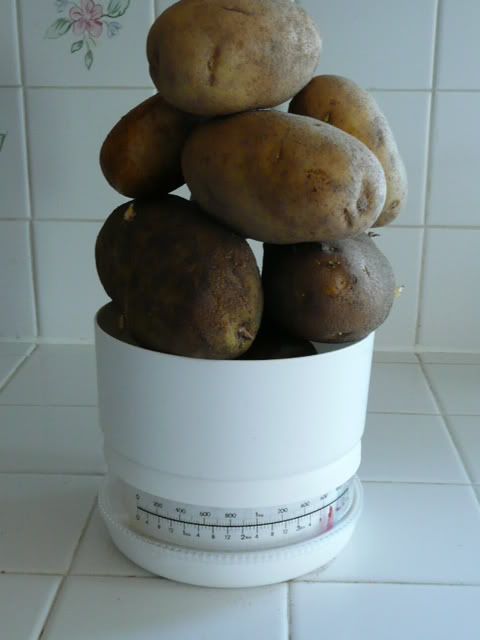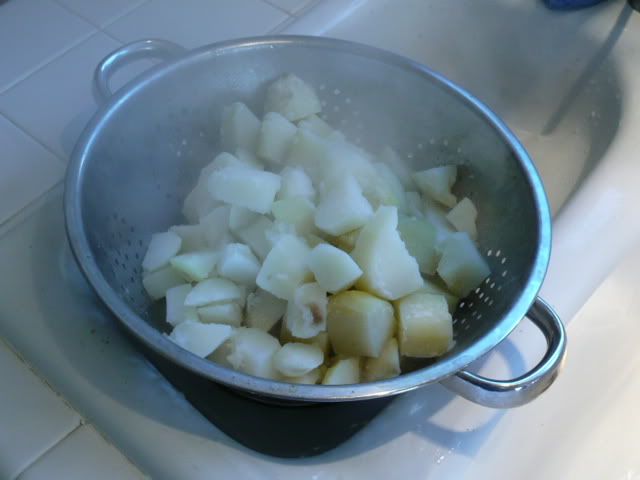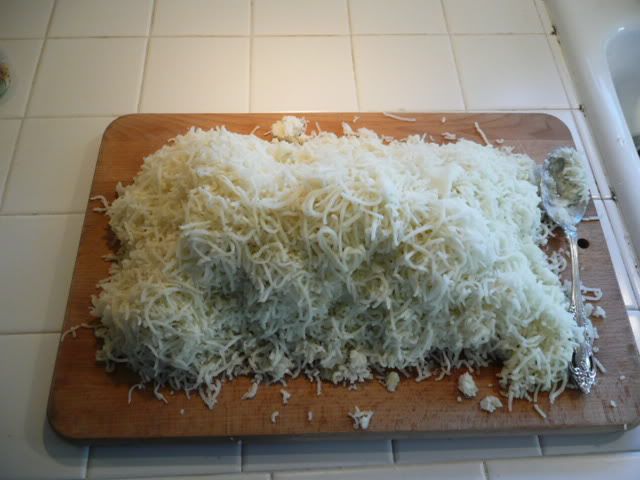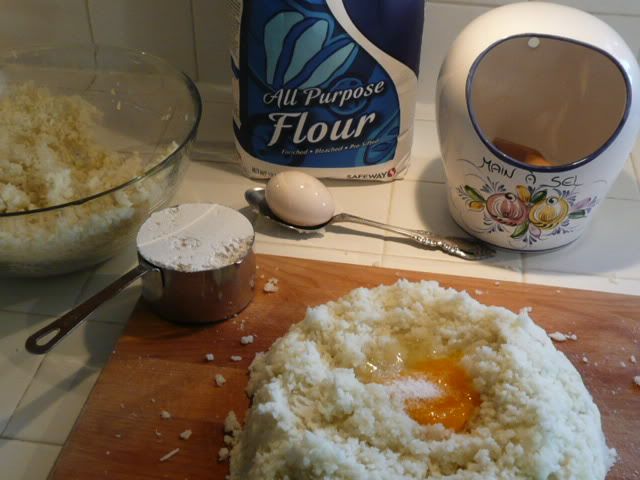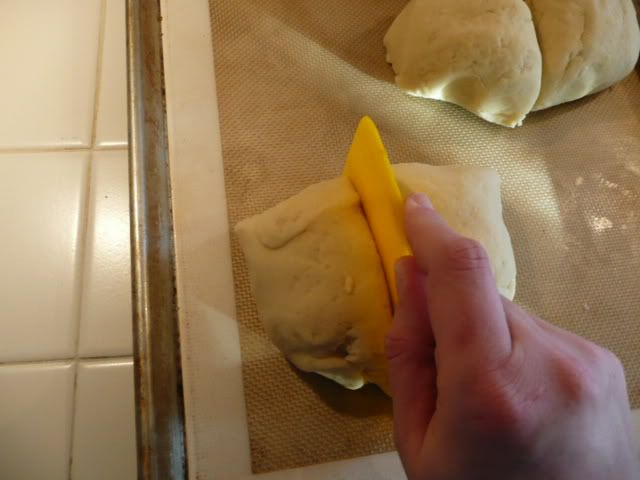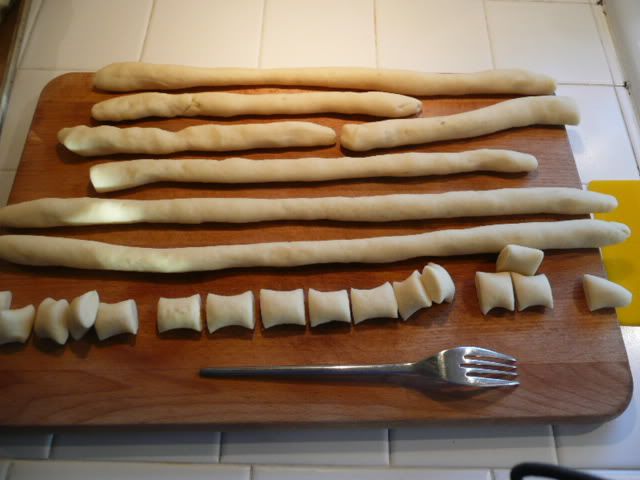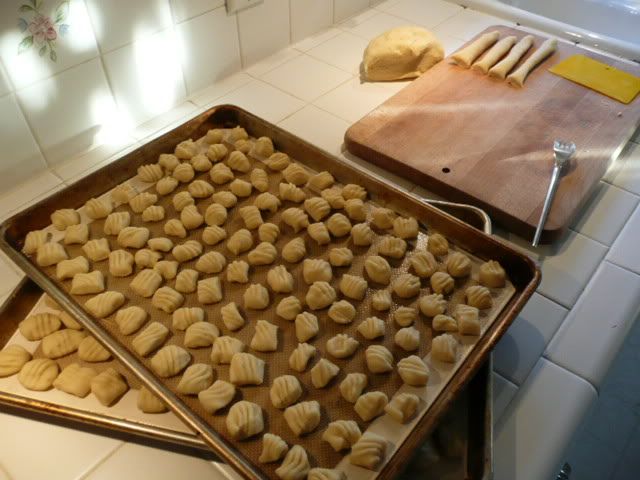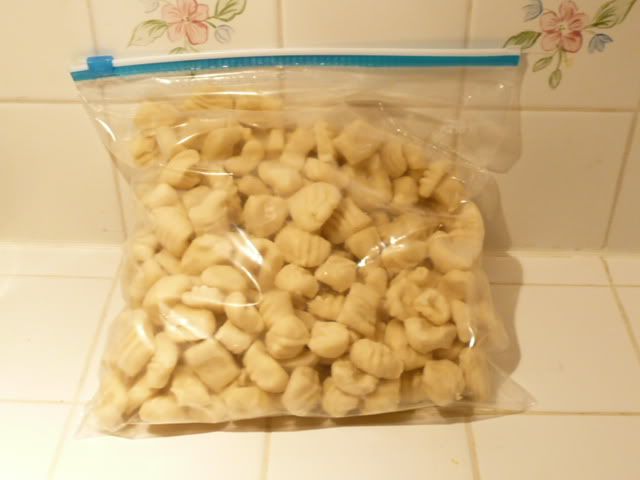Poached eggs on toast have long been one of my favorite meals. Our hens are laying again after a 6-week period of no eggs. Some of our girls stopped laying in late October or November, meaning that they took over 3 months of vacation. It's about time they started paying their rent again. Not only are we eating our own eggs instead of storebought ones, I'm able to sell eggs again.
Hint... hint... if any of my Tacoma readers want naturally nested, cage-free, free-range, humanely raised eggs from hens with names, let me know. At $4/dozen they're less than at the closed-for-the-season Broadlway farmers market.
And to you midwesterners selling your eggs for $2/dozen, shush. This is the city.
Anyway, poached eggs are simple and quick to make. You can go from conceptualization to digestion in maybe 8 minutes. With the egg already perched on top of the toast, there's no chance of that delicious, runny yolk going to waste. Just a little salt and pepper makes this the perfect meal.
Poached eggs
Eggs
Toast
Bring water to a low boil (hot enough so that it bubbles but isn't violently boiling) in a saucepan. Crack your eggs into a small bowl or cup. Slowly tip your cup into the water and allow the egg to slide in. Since the water is on a low boil, the egg shouldn't go far.
Some people swear by the swirling water method, which I think is pretty silly. Don't bother.
Cook your egg to the desired doneness. For me this took maybe 3-4 minutes. I've always loved runny, goopy egg yolks.
Scoop the egg out of the water with a slotted spoon and serve on hot toast with salt, pepper, and/or hot sauce. Heck, go crazy and dump some hollandaise on there if you need the extra calories in your diet.
Bread: Poulsbo Bread
Eggs: from our yard, I think Beaker & Dozer laid these
UPDATED around 5:20 p.m. - Friends have been asking me on my personal Facebook page how I did this. [shrug] I've never had poached eggs go wrong so it never occurred to me that they could. I think that the key lies in a low cooking temperature. Don't let your water come to a full boil. See this link for pictures of water at various cooking temps.
Something my dad always does, which I never do anymore, is to submerge the entire egg (in shell) into a pot of boiling water for roughly 30 seconds. His eggs always turned out well. In retrospect I think it may function to coagulate the egg white a bit, helping it stay together in the water while being poached.
Doing our best to eat locally and sustainably, raising our own food on a small lot in the city, making hand-crafted cuisine, and keeping it real.
Monday, February 28, 2011
Sunday, February 27, 2011
Ugly soup
In January, as part of my 2011 resolutions, I was cleaning and ran the oven through a self-cleaning cycle. Little did I know that would be its swan song. It never worked right after that, unable to reach temperatures much above "lukewarm".
Gene and I soon went out and picked a new gas oven to replace the old electric one. The problem is that while we have natural gas in the house for heat and hot water, the kitchen isn't plumbed for gas. In addition, the delivery date for the oven was a couple of weeks out. We've been hobbling along without a functional oven for over a month. As someone who blogs about, among other things, food, that has been a particularly disheartening turn of events. I have bacon to make, dagnabbit!
On the bright side, yours truly is getting a gas stove. I haven't cooked on gas since I lived in France over 15 years ago and I cannot wait.
The other bright side is that this is a convection oven. Yippee! Though, truth be told, I have no idea what that means in terms of how it'll affect my cooking.
Other upgrades include a newish stainless steel over-the-range microwave we got on Craigslist for $40 and a pot-filler faucet to be installed in the near future above the stove.
All in all the dead oven wasn't such a bad thing, though I'm not excited about the cost. Alas.
With no oven we've been grilling on the BBQ and cooking on the stove top. It sucks to BBQ when you can see your breath.
I used up a variety of withering ingredients for this soup and, as the title suggests, it's not going to win any beauty contests but it makes up for it in tastiness and healthiness.
Ugly soup
1 cup dried black beans, soaked and rinsed (ugly ingredient #1)
Olive oil
1/2 onion, diced
3 diced parsnips
4-6 diced carrots
1 cup corn
broth or bouillon of your choice (I used a homemade veggie bouillon, which meant I needed no additional salt)
handful of dehydrated tomatoes (ugly ingredient #2)
1 tbsp cumin
1/2 tsp red pepper flakes
3 ounces salt pork (or use any flavorful meat, such as sausage)
Salt & pepper to taste
In a large stockpot, cook onion in ~1 tablespoon olive oil over medium heat until translucent. Toss in the root veggies and cook another few minutes to caramelize and get flavor.
Add the corn, tomatoes, meat, and seasonings, then cover everything with your liquid of choice. Simmer for an hour or longer, depending upon how much time you have.
Serve with a crusty bread to sop up the brothy goodness.
Why is this ugly? First, the black beans turn everything else a murky brown, like the white parsnips and corn. The rehydrated tomatoes swell up and look like rusty-brown globs. They're not sexy, but they are tasty.
Most of my ingredients were locally sourced, with the exceptions being the beans, seasoning, and olive oil. The salt pork is a byproduct of the February Charcutepalooza Challenge, bacon and/or pancetta, and comes from Lucky Pig Farm.
Look what was waiting for me when I got home today (pardon the cruddy cell phone picture).
I plan to break it in tomorrow.
Gene and I soon went out and picked a new gas oven to replace the old electric one. The problem is that while we have natural gas in the house for heat and hot water, the kitchen isn't plumbed for gas. In addition, the delivery date for the oven was a couple of weeks out. We've been hobbling along without a functional oven for over a month. As someone who blogs about, among other things, food, that has been a particularly disheartening turn of events. I have bacon to make, dagnabbit!
On the bright side, yours truly is getting a gas stove. I haven't cooked on gas since I lived in France over 15 years ago and I cannot wait.
The other bright side is that this is a convection oven. Yippee! Though, truth be told, I have no idea what that means in terms of how it'll affect my cooking.
Other upgrades include a newish stainless steel over-the-range microwave we got on Craigslist for $40 and a pot-filler faucet to be installed in the near future above the stove.
All in all the dead oven wasn't such a bad thing, though I'm not excited about the cost. Alas.
With no oven we've been grilling on the BBQ and cooking on the stove top. It sucks to BBQ when you can see your breath.
I used up a variety of withering ingredients for this soup and, as the title suggests, it's not going to win any beauty contests but it makes up for it in tastiness and healthiness.
Ugly soup
1 cup dried black beans, soaked and rinsed (ugly ingredient #1)
Olive oil
1/2 onion, diced
3 diced parsnips
4-6 diced carrots
1 cup corn
broth or bouillon of your choice (I used a homemade veggie bouillon, which meant I needed no additional salt)
handful of dehydrated tomatoes (ugly ingredient #2)
1 tbsp cumin
1/2 tsp red pepper flakes
3 ounces salt pork (or use any flavorful meat, such as sausage)
Salt & pepper to taste
In a large stockpot, cook onion in ~1 tablespoon olive oil over medium heat until translucent. Toss in the root veggies and cook another few minutes to caramelize and get flavor.
Add the corn, tomatoes, meat, and seasonings, then cover everything with your liquid of choice. Simmer for an hour or longer, depending upon how much time you have.
Serve with a crusty bread to sop up the brothy goodness.
Why is this ugly? First, the black beans turn everything else a murky brown, like the white parsnips and corn. The rehydrated tomatoes swell up and look like rusty-brown globs. They're not sexy, but they are tasty.
Most of my ingredients were locally sourced, with the exceptions being the beans, seasoning, and olive oil. The salt pork is a byproduct of the February Charcutepalooza Challenge, bacon and/or pancetta, and comes from Lucky Pig Farm.
Look what was waiting for me when I got home today (pardon the cruddy cell phone picture).
I plan to break it in tomorrow.
Friday, February 25, 2011
Why to freeze your yarn
My knitting habit started humbly. I commuted to Seattle by bus for four years, where I became friends with the other riders. Several of them were knitters. I'd wanted to learn how for a long time and one day a woman brought some spare yarn and needles to teach me how to knit.
About a week later I taught myself how to purl. Then purl and knit. Then k1 p1. I started conversations with strangers who were knitting. People chatted me up when they saw me knit. Even a seemingly scary gangbanger type once started talking to me about knitting on a cross-city bus. A whole community had just opened up to me.
I was addicted.
Soon thereafter I was buying books, making scarves, logging onto http://www.ravelry.com/ (find me there: I'm frenchiejenn), and cranking out some major yarn yardage. As any knitter or crocheter knows, the next step is to start building a stash.
Maybe your yarn stash is relatively modest, as is mine. My stash consists of at most 30 skeins of assorted yarns tucked into baskets and cloth boxes like this one. Everything was confined to a single bookcase in our office. Well, mostly.
Last weekend a girlfriend and fellow knitter came over and I was showing her some of my fav yarns. She picked up one of the skeins and held out a tiny white cylinder that was perhaps a quarter inch long.
"Jenn," she whispered, "you have moths".
As it turns out, I have casemaking clothes moths, as pictured above. Ugh. Left to their own devices, they can destroy a yarn stash.
A freezing-heating-freezing cycle will kill all stages of moth development. Luckily for me, the discovery of moths in my stash has coincided with a deep freeze in Western Washington.
I carefully examined my stash yarns to remove any additional casings I could find. My entire stash got moved outside last weekend and it has stayed there for several days. This evening I'll bring all the yarn into the house for a few hours to warm them up, then return them to the carport overnight to re-freeze.
When I bring the yarn back into the house I'm going to put it in airtight zipper bags in my cedar chest. There's some debate about whether cedar actually repels moths or their larvae but it certainly won't hurt and puts my beautiful Lane cedar chest - a high school graduation gift - to good use.
I've learned a valuable lesson about how to care for my stash. Yarn costs money and regardless of how much you've spent, anything eaten by insects is just really expensive bug food.
On that note, here's my next project yarn. "It's Native" is grown, spun, and hand-dyed entirely in the USA, which I didn't realize until after I bought it. I debated between a delicious apple green and this teal, which ultimately came home with me. At $38 for the skein it's the most expensive yarn I've ever bought. Good thing it's 1000 yards, which will be enough for a lace shawl.
I'm having a hard time selecting the exact shawl this yarn will become. I'll post pics when I decide.
I'm nearly done with these mittens. I have to proctor an exam today and may be able to finish them during that timeframe.
I knit my name into the lining should I ever lose one, God forbid. My last name is unusual, making me a quick google search away.
How many of you yarn hoarders are shoving your yarn into the freezer after reading this post?
About a week later I taught myself how to purl. Then purl and knit. Then k1 p1. I started conversations with strangers who were knitting. People chatted me up when they saw me knit. Even a seemingly scary gangbanger type once started talking to me about knitting on a cross-city bus. A whole community had just opened up to me.
I was addicted.
Soon thereafter I was buying books, making scarves, logging onto http://www.ravelry.com/ (find me there: I'm frenchiejenn), and cranking out some major yarn yardage. As any knitter or crocheter knows, the next step is to start building a stash.
Maybe your yarn stash is relatively modest, as is mine. My stash consists of at most 30 skeins of assorted yarns tucked into baskets and cloth boxes like this one. Everything was confined to a single bookcase in our office. Well, mostly.
 |
| Photo from kaboodle.com |
 |
| Photo from evergreenpestcontrol.com |
"Jenn," she whispered, "you have moths".
 |
| Photo from whatsthatbug.com |
A freezing-heating-freezing cycle will kill all stages of moth development. Luckily for me, the discovery of moths in my stash has coincided with a deep freeze in Western Washington.
I carefully examined my stash yarns to remove any additional casings I could find. My entire stash got moved outside last weekend and it has stayed there for several days. This evening I'll bring all the yarn into the house for a few hours to warm them up, then return them to the carport overnight to re-freeze.
When I bring the yarn back into the house I'm going to put it in airtight zipper bags in my cedar chest. There's some debate about whether cedar actually repels moths or their larvae but it certainly won't hurt and puts my beautiful Lane cedar chest - a high school graduation gift - to good use.
I've learned a valuable lesson about how to care for my stash. Yarn costs money and regardless of how much you've spent, anything eaten by insects is just really expensive bug food.
On that note, here's my next project yarn. "It's Native" is grown, spun, and hand-dyed entirely in the USA, which I didn't realize until after I bought it. I debated between a delicious apple green and this teal, which ultimately came home with me. At $38 for the skein it's the most expensive yarn I've ever bought. Good thing it's 1000 yards, which will be enough for a lace shawl.
 |
| Photo from yarn.com |
I'm having a hard time selecting the exact shawl this yarn will become. I'll post pics when I decide.
I'm nearly done with these mittens. I have to proctor an exam today and may be able to finish them during that timeframe.
I knit my name into the lining should I ever lose one, God forbid. My last name is unusual, making me a quick google search away.
How many of you yarn hoarders are shoving your yarn into the freezer after reading this post?
Thursday, February 24, 2011
Bringing home babies
This, my friends, is the time of year when many people start thinking about bringing home a box of peeping babies. In fact, one friend (hi, Steph!) is getting chicks THIS WEEK and another is considering it (Arin - do it!). The local feed stores are starting to advertise chick availability. I love going to the feed stores and watching the massive bins of feisty chicks.
Because we've already done this several times, G-man and I have agreed that we won't get any more chickens until our flock of nine has diminished somewhat. Combine the facts that we we don't plan on killing our hens as their productivity declines and that we carefully protect the girls from predators, and it's going to be a while before we have any babies running around on the kitchen floor.
I miss having baby chicks. We had three batches of them over two summers and they're so much fun. The're sweet and inquisitive, fearless and easily exhausted. They run around chasing each other and then fall asleep standing up only to tip over or splay out. They are, in a word, adorable.
To be fully prepared for having chicks, you'll need a few things:
1. chick feeder and chick feed
2. chick waterer
3. heat lamp with red bulb (Why red? First, the red light is less glaring and since it'll be on 24/7, this is a good thing for the babies. Secondly it helps prevent the chicks from picking at each other because they will pick at blood and feathers, potentially harming weaker chicks.)
4. pine (never ever use cedar with birds) shavings
5. A large box. If you can get a watermelon box from the grocery store, use that. It'll seem too big at first but we found that our chicks could fly up over a foot after a week, and to nearly 2.5' just a week later. We used a massive plastic tote with a screen over the top.
6. Paper towels. Those little buggers crap everywhere. The poops are small but powerfully stinky.
7. a perch of some sort, even if it's just a block of wood
8. a pie tin and parakeet grit - introduce this around a week and the babies will gobble it like mad
My Pet Chicken has an excellent resource for how to take care of your chicks. Read it!
After having raised three batches of chicks here's some of my advice:
Frequent handling of babies will ensure friendlier adults. One of our favorite things was to allow the chicks to fall asleep in our hands and then just hold them. If you're up for it, wrap a towel around your neck and let the babies burrow into it. Keep paper towels close!
Monitor household animals closely. Our geriatric cats liked watching the chicks but weren't interested in hunting them. The same can't be said for younger cats or dogs. A friend's dog killed her chicks in just moments.
If there are chicks running around on the floor, shuffle your feet or don't walk around at all. Curry ran and slid under my foot when she was maybe two weeks old. I was wearing slippers but still injured her foot. The sound she made when it happened was horrifying. Luckily I only lifted a couple of scales and didn't break the bone, but it bled quite a bit and swelled up enormously. She favored her foot for a few days and I felt like a giant lumbering asshole.
Before you give the chicks any non-feed food, present them grit for a day or two. After that, introduce them to grass, lettuce, fruits, berries, tomatoes, scraps of cheese or meat, and anything else you can imagine. If you want to laugh your head off, get a few crickets at the pet store and watch the babies play chicken rugby once they realize it's food. The downside of this is that my chickens now see any plastic bag as a potential source of crickets.
The cute phase lasts only about three weeks. Then one day you'll come home from work and find that your fast-growing baby chickens have turned into Skeksis.
They grow so quickly that you can literally see differences over the course of just a few hours. Leave in the morning for work and they have just two feathers. In the evening they'll have four. It's weird.
Having chickens can be very rewarding but they are a large responsibility. They're highly amusing and will eventually present you with a regular supply of eggs.
Do you plan on getting chicks this spring?
 |
| Photo from http://reneefinberg.blogspot.com/ |
I miss having baby chicks. We had three batches of them over two summers and they're so much fun. The're sweet and inquisitive, fearless and easily exhausted. They run around chasing each other and then fall asleep standing up only to tip over or splay out. They are, in a word, adorable.
To be fully prepared for having chicks, you'll need a few things:
1. chick feeder and chick feed
2. chick waterer
3. heat lamp with red bulb (Why red? First, the red light is less glaring and since it'll be on 24/7, this is a good thing for the babies. Secondly it helps prevent the chicks from picking at each other because they will pick at blood and feathers, potentially harming weaker chicks.)
4. pine (never ever use cedar with birds) shavings
5. A large box. If you can get a watermelon box from the grocery store, use that. It'll seem too big at first but we found that our chicks could fly up over a foot after a week, and to nearly 2.5' just a week later. We used a massive plastic tote with a screen over the top.
6. Paper towels. Those little buggers crap everywhere. The poops are small but powerfully stinky.
7. a perch of some sort, even if it's just a block of wood
8. a pie tin and parakeet grit - introduce this around a week and the babies will gobble it like mad
My Pet Chicken has an excellent resource for how to take care of your chicks. Read it!
After having raised three batches of chicks here's some of my advice:
Frequent handling of babies will ensure friendlier adults. One of our favorite things was to allow the chicks to fall asleep in our hands and then just hold them. If you're up for it, wrap a towel around your neck and let the babies burrow into it. Keep paper towels close!
Monitor household animals closely. Our geriatric cats liked watching the chicks but weren't interested in hunting them. The same can't be said for younger cats or dogs. A friend's dog killed her chicks in just moments.
If there are chicks running around on the floor, shuffle your feet or don't walk around at all. Curry ran and slid under my foot when she was maybe two weeks old. I was wearing slippers but still injured her foot. The sound she made when it happened was horrifying. Luckily I only lifted a couple of scales and didn't break the bone, but it bled quite a bit and swelled up enormously. She favored her foot for a few days and I felt like a giant lumbering asshole.
Before you give the chicks any non-feed food, present them grit for a day or two. After that, introduce them to grass, lettuce, fruits, berries, tomatoes, scraps of cheese or meat, and anything else you can imagine. If you want to laugh your head off, get a few crickets at the pet store and watch the babies play chicken rugby once they realize it's food. The downside of this is that my chickens now see any plastic bag as a potential source of crickets.
The cute phase lasts only about three weeks. Then one day you'll come home from work and find that your fast-growing baby chickens have turned into Skeksis.
 |
| Image from http://www.onlyforever.com/d_KiraPics.html |
Having chickens can be very rewarding but they are a large responsibility. They're highly amusing and will eventually present you with a regular supply of eggs.
Do you plan on getting chicks this spring?
Monday, February 21, 2011
Bacon and Pancetta
Charcutepalooza is in full swing. It took me a while to get my hands on pink salt, meaning that I'm a bit behind schedule.
A while back I bought a slab of pork belly from my friend and favorite pig farmer, Lisa. My intent was to cure some pancetta - this was pre-Charcutepalooza - but I was intimidated by the prospect of taking a $20-slab of meat and hanging it up. The pork belly languished in the freezer for a couple of months.
Luckily for me, Charcutepalooza came along, and with it the February challenge to make either fresh bacon or pancetta. It was time for the pork belly to awaken from its deep slumber.
Not knowing what I would do with several pounds of pancetta, I opted to make both the fresh bacon AND the pancetta. As you can see here, I've trimmed the meat to make it rectangular (more important for the pancetta than the bacon). The scraps got cut into chunks and made into salt pork.
A while back I bought a slab of pork belly from my friend and favorite pig farmer, Lisa. My intent was to cure some pancetta - this was pre-Charcutepalooza - but I was intimidated by the prospect of taking a $20-slab of meat and hanging it up. The pork belly languished in the freezer for a couple of months.
Luckily for me, Charcutepalooza came along, and with it the February challenge to make either fresh bacon or pancetta. It was time for the pork belly to awaken from its deep slumber.
Not knowing what I would do with several pounds of pancetta, I opted to make both the fresh bacon AND the pancetta. As you can see here, I've trimmed the meat to make it rectangular (more important for the pancetta than the bacon). The scraps got cut into chunks and made into salt pork.
For the pancetta I made up the meat rub, a combination of pink salt, pepper, juniper berries, bay leaves, nutmeg, and a few other things. Since freshly ground nutmeg can be a pain to weigh, I put the entire grater into the bowl and zero-ed out the scale. Then I grated my nutmeg and periodically weighed it. When it hit the correct weight, I opened up the grater and dumped its contents into the bowl. This was much easier than grating the nutmeg directly into the bowl.
Wish you could have smelled this.
The fresh bacon called just for the "Basic Dry Cure". It contains sugar, kosher salt, and pink salt. I've found it's helpful to write down the page number & source book so that I can replicate it at a future date. If not, Sharpie comes off with rubbing alcohol.
Here are the meats in their respective cures, bacon on the left, pancetta on the right.
These went into a pyrex dish and into the fridge for a week to cure. I flipped them daily and was really grateful for that dish after about day 2 - baggies will leak. Yuck.
I'm now in phase two of curing these meats. The bacon has to get baked at 200 degrees until its internal temp reaches 150. Unfortunately, I am sans oven until at least 2/23 when our new one gets here. It's gas and the old one is electric so we have some plumbing work to do between now and then. Back into the freezer the bacon went... sigh.
The pancetta, however, is another story. When its week of wet curing was over, I trussed that sucker up. To do this, you rinse off the meat, pat it dry, then sprinkle it with pepper. You roll it up from the short end and then secure it with cotton butcher's twine. The goal is to get it as tight as possible with no air pockets trapped inside. It was kind of fun, actually.
I had this image in my head the whole time. I relate to Mammy in a whole new way now!
The stairwell to our attic goes up from our kitchen. Many people don't notice it because I've hung all my pots and pans on the door. A few years ago I hung wire shelving in the stairwell and call it "the pantry". Since our attic isn't insulated (OK, much of the house isn't), the pantry is the perfect place to hang my pancetta. It's cool, dry, and out-of-reach of our 2 cats and 1 dog.
The meat weighed 1043 grams when I trussed it. The goal is for it to lose 30% of its weight (730 grams). I'll weigh it in a few days to see how it's doing.
In the meantime, I'll be looking up recipes that use pancetta. Let me know if you have a must-try recipe!
Sunday, February 20, 2011
I am an urban homesteader
I used to read the blog put out by the Dervaes family in Pasadena, California. Over time I found that I couldn't relate to them: their garden is the size of my entire lot; they don't have office jobs (or so it appears); they live in a warmer climate where gardening seasons are longer and central heating is not as necessary as it is in the Pacific Northwest; they're vegetarians; the adult children live with their father. They do a lot of cool things but many were not accessible to your average working professional.
I started my own blog, in fact, in response to what I saw as a dearth of information for people like me: people want to live as sustainably as possible without wearing scavenged burlap sacks, quitting their jobs to free up time to make biodiesel, and hooking up their decorative whirly-gig collection to generators to power their ration of 20 minutes of electricity each day.
I don't necessarily think of myself as an "urban homesteader" - the image conjures up (at least for me) something far more organic-carob-eating-hippie than I am - but I recognize that the phrase easily describes my lifestyle. When I talk about my blog and hobbies, I do tend to use that term to describe my values and activities. People know what "urban" means, and they can readily imagine what "homestead" activities are.
Recently the Dervaes family of Pasadena, CA laid claim to the "urban homestead" term by trademarking it. To protect "their" property they have sent 18 "normal and professional" letters to public libraries teaching classes about urban homesteading, a farmers market doing sustainability outreach to city-dwellers, a school, bloggers, business, publishers, and even a radio station. Each of these was shocked to get what is essentially a cease-and-desist letter.
The family claims that the cease-and-desist phrase has been made up to demonize them. If that's the case, why did they get Facebook to block pages that mention or promote urban homesteading on the grounds of trademark infringement? If that's not ceasing & desisting, I must be in need of a dictionary. A quick google search shows that the term and lifestyle has been around since at least the 1970s, despite the Dervaes' claim to be the "Original Modern Urban Homestead".
To the Dervaes family I say this: the community of urban homesteaders is vast and diverse. We have much to learn from and teach one another. Keep teaching your classes, raising food sustainably, and doing good works in your community. You've done a lot of good but in this regard, you're wrong. "Urban homestead", in all its trademarked variations, is not your sole intellectual property, nor should it be. It is a general term that describes a specific type of lifestyle and core beliefs. That you were able to convince the trademark office of your right to the term is shocking. No wonder there's been so much backlash.
Sustainability is still fledgling in many parts of the country. On the West Coast we've been lulled into a false sense of security, believing that everyone recycles, everyone drives fuel-efficient vehicles, and everyone shops at farmers markets. It's not the case. Your actions against those who share your passion for urban solutions to food supply issues have made the hurdles to sustainability that much higher. Rather than encourage us - your fellow urban homesteaders - to forge onward in our efforts, your linguistic land grab has alienated entire communities of people who would otherwise share your ideals.
Keep your trademarks on Path to Freedom (R) and the other phrases that are clearly and obviously specific to the Dervaes Institute activities and outreach. But "urban homestead" is too general a term to call your own: it belongs to all of us, and therefore none of us.
Friday, February 18, 2011
When pink salt is not pink salt
A couple we know loves salt. They love salt so much that they would get salt licks if it were possible. They collect different salts: smoked salt, truffle salt, flavored salt, etc. They even bought a block of Himalayan pink salt a while back.
It kinda looks like this:
It kinda looks like this:
You serve food on it. Supposedly you can cook on it but it causes the slab to degrade faster. They served sliced fresh mozzarella on it, a tasty treat indeed!
Last summer when I decided that I was ready to test making up a batch o' bacon I looked up recipes online and found that many of them called for "pink salt". That stuff is what came to mind. A short trip to a local store and I'd procured a bottle of Himilayan Pink Salt.
Himilayan pink salt is mined and gets its color from the minerals it contains naturally. The color varies from a pale rose to nearly coral. In ground or flaked form it's used just like any other type of table salt. If you buy a slab of it you can serve food on it, as our friends do, or even cook on it.
For some reason I never used it and opted for regular salt, instead. As it turns out, I'd gotten the wrong kind of pink salt.
"Pink salt" (sometimes called Prague Powder #1) is a whole other thing. It's used for curing meats and is a mixture of 93.75% sodium and 6.25% sodium nitrate. It's dyed bright pink so that you don't mistake it for regular salt and accidently poison yourself. Oops!
Pink (curing) salt is more difficult to find, which is why my February Charcutepalooza post is behind schedule. You can find pink salt online but I'm cheap and didn't want to pay $8 to ship a $5 item. I called a local butcher and asked for pink salt. They didn't have it but referred me to a butcher in a nearby town. After choking when they heard how much I wanted - "Is a pound OK?" - they agreed to sell it to me for $5. I guess a pound is kinda a lot but Charcutepalooza does go all year long.
This stuff is screaming, cotton candy p-i-n-k. Here's a side-by-side.
Tomorrow we make pancetta, bacon, and salt pork. It's not as much work as it sounds.
Tuesday, February 15, 2011
A drawback of urban farming
Yesterday evening I was sitting in my warm, cozy home. It was peaceful and the resident quadripeds were all snoozing. I was working intently on my newest knitting project, Fiddlehead Mittens. I've never done colorwork before and there's a fairly steep learning curve. Hubbie wasn't home from work yet.
The weather forecast was dreary: high winds, heavy rain, and chilly temps. But I was snug as a bug in a rug! The storm hadn't hit the area yet but wasn't far.
All of a sudden the storm arrived with much fury. I could hear the wind howling and could see the boughs of the giant fir tree across the street whip around.
I called G-man to warn him of the weather because he was driving home. He told me later that the car doors felt like they were going to get ripped open as he drove across the Narrows Bridge.
I digress. After calling the hubster, it dawned on me: I hadn't closed up the chicken coop yet for the night. Our neighbors lost 8 hens to noctural critters this fall and we've been doubly careful about the safety of our girls.
I pulled on a pair of boots, slogged out to the coop, counted heads, filled the feeder, collected the eggs (yay: 3!!) and locked them up tight for the night. The whole time I was thinking: my friends without chickens are at home, warm and cozy in their houses but silly me, I'm out in this awful storm locking up the stupid birds, all for the sake of fresh eggs.
We love having chickens, we really do. And I've talked about the downsides before. But... bluuuurgggg... fresh eggs don't make it suck any less when you're tramping through mud and the rain to shut a chicken coop.
The weather forecast was dreary: high winds, heavy rain, and chilly temps. But I was snug as a bug in a rug! The storm hadn't hit the area yet but wasn't far.
All of a sudden the storm arrived with much fury. I could hear the wind howling and could see the boughs of the giant fir tree across the street whip around.
I called G-man to warn him of the weather because he was driving home. He told me later that the car doors felt like they were going to get ripped open as he drove across the Narrows Bridge.
Tangent... maybe you've heard of this bridge? It fell down quite famously in 1940, just four months after its completion. The video is chilling. Check out 1:31... can you imagine the noise that must have made?
According to family lore, my grandfather drove across it that morning. At the time he was a brand new father of a 2-week-old son and weeks shy of his 23rd birthday. After the bridge fell he was stuck on the Key Peninsula and had to drive back to Tacoma via Olympia - a long way.
I digress. After calling the hubster, it dawned on me: I hadn't closed up the chicken coop yet for the night. Our neighbors lost 8 hens to noctural critters this fall and we've been doubly careful about the safety of our girls.
I pulled on a pair of boots, slogged out to the coop, counted heads, filled the feeder, collected the eggs (yay: 3!!) and locked them up tight for the night. The whole time I was thinking: my friends without chickens are at home, warm and cozy in their houses but silly me, I'm out in this awful storm locking up the stupid birds, all for the sake of fresh eggs.
We love having chickens, we really do. And I've talked about the downsides before. But... bluuuurgggg... fresh eggs don't make it suck any less when you're tramping through mud and the rain to shut a chicken coop.
Monday, February 14, 2011
Gnocchi with greens, sausage, and tomatoes
We ate a LOT of gnocchi after that massive batch. Here's one variation on a theme:
I whipped up a batch of gnocchi and served it with spinach, sundried tomatoes I made last summer, Lucky Pig Farm spicy Italian sausage, and a little bit of home-canned chicken broth to give it a sauce. Lisa's sausage is so flavorful that I didn't even add salt. Get the best sausage you can and give this a go.
This was super fast to make:
1. Boil a big pot of water (the bigger the better because the frozen gnocchi will cool the water down).
2. While the water is heating up, cook up the sausage. Add chopped sundried tomatoes. Garlic and diced onions would be good, too! Stir in a little broth to make a sauce.
3. Once the water boils, throw in a handful of frozen gnocchi per person. When they float, scoop them out with a slotted spoon and drop them right into the sausage mixture.
4. Toss with some greens - any would be good - until the greens are wilted and serve.
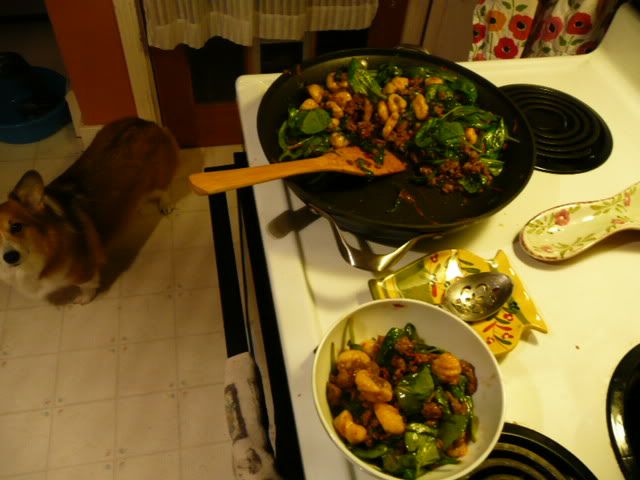 |
| You have nommies for me? |
Rosemary is like any dog: always underfoot and hoping for scraps to fall. That's how I discovered that she loves frozen blueberries, by the way. Silly dog.
The only non-local ingredient was the spinach. We need our greens! This is a hearty, delicious meal and a little goes a long way. I made it quite a few times, including once for my brother. Serve with a robust wine and ignore the torrential rains outside.
Friday, February 11, 2011
Gnocchi... OH!
On a recent weekend I got it into my head that I needed to make gnocchi from scratch. I still had some potatoes from my garden and this would be a good way to use some of them. Besides, the gnocchi you buy in the grocery store can be pretty gummy and I knew I could improve on it.
I did some research on recipes and figured that Mario Batali probably knew what he was doing. Besides, his parents have a deli in Seattle and he used to live in Italy - his recipes carry street cred. I decided to use this basic gnocchi recipe, which you can find here.
After skimming the recipe I decided to increase the potatoes from 3 pounds to 4. My reasoning was that 3 pounds of baked or mashed potatoes doesn't go very far and since I was going through the effort of making gnocchi, dammit, I'd make the hell out of some gnocchi.
Fast forward about a half hour... I've peeled, cut up, boiled, drained...
and riced the potatoes.
And then I realized... that's a LOT of potatoes. To give you some scale, these tiles are 4"x4".
I ran back to the computer and checked out Mario's serving size. Double crap: his recipe served 12 but with my additions, it would serve more like 16. Gnocchi dough? More like gnocchi... DOH!
I had to split the potatoes in half in order to work with them.
Seriously, I must have had my head up my butt that day. The recipe clearly calls for oil, which you may notice is absent from the above photo. I made the gnocchi without oil and they were fine but still: it was obviously amateur day in my kitchen.
By the way, that ceramic thing on the right that looks like a motorcycle helmet is a French main a sel (salt pig/cellar), which I bought in Brittany in 2000. I love it and the memories it evokes. When I bought it I also bought 2 kilos (nearly 5 pounds) of French grey salt for some piddly amount like $3. Do you have or use a salt cellar? Once you get used to it you'll never go back.
Back to the gnocchi... The mixing & kneading portion of this program is brought to you by... NOBODY! It's too sticky and goopy and messy, so no photos.
After kneading the dough I separated it into balls and used this plastic thingy to cut it into smaller sections. I rolled them out into snakes and cut those into the final dumplings.
At this point you can leave them as-is or run them over the tines of a fork to give them the characteristic lines of gnocchi.
Here's the best video I could find of the shaping process:
Start to finish the entire process of making gnocchi took roughly 2 hours.
Did I mention this makes a lot of gnocchi?
This made so many gnocchi that I placed them on silpats & froze them on cookie sheets. After they were frozen I threw them into a zip-top bag and returned them to the freezer. We ate gnocchi for quite a few meals, quite possibly more than 16. These are very filling and hearty. I think they'd last a couple of months in the freezer but no longer.
To cook these gnocchi, simply bring a large pot of water to a boil and add the desired amount. When the gnocchi flloat - about a minute - scoop them out with a slotted spoon. Top with your favorite pasta sauce and VOILA gnocchi!
Why did I make gnocchi?
First, I was curious. Could I do it? Would they taste good?
Second, they were cheap to make. The potatoes were from my garden, as were the eggs. Flour and salt are both cheap. And since I forgot the oil they were even cheaper! Gnocchi are kinda pricey at the store.
Finally, they provided a starch that was local. Many of the dark days challenge dishes I've wanted to make were better with pasta. With homemade gnocchi I could confidently say that yes, this starch was local.
I'll definitely make gnocchi again. Like I said, we ate them for a long time and they were delicious and filling. Next time I think I'll enlist the hubbie to help with shaping the pasta, which was the longest part of the process.
I'll post next about how we ate the gnocchi!
I did some research on recipes and figured that Mario Batali probably knew what he was doing. Besides, his parents have a deli in Seattle and he used to live in Italy - his recipes carry street cred. I decided to use this basic gnocchi recipe, which you can find here.
After skimming the recipe I decided to increase the potatoes from 3 pounds to 4. My reasoning was that 3 pounds of baked or mashed potatoes doesn't go very far and since I was going through the effort of making gnocchi, dammit, I'd make the hell out of some gnocchi.
Fast forward about a half hour... I've peeled, cut up, boiled, drained...
and riced the potatoes.
And then I realized... that's a LOT of potatoes. To give you some scale, these tiles are 4"x4".
I ran back to the computer and checked out Mario's serving size. Double crap: his recipe served 12 but with my additions, it would serve more like 16. Gnocchi dough? More like gnocchi... DOH!
I had to split the potatoes in half in order to work with them.
Seriously, I must have had my head up my butt that day. The recipe clearly calls for oil, which you may notice is absent from the above photo. I made the gnocchi without oil and they were fine but still: it was obviously amateur day in my kitchen.
By the way, that ceramic thing on the right that looks like a motorcycle helmet is a French main a sel (salt pig/cellar), which I bought in Brittany in 2000. I love it and the memories it evokes. When I bought it I also bought 2 kilos (nearly 5 pounds) of French grey salt for some piddly amount like $3. Do you have or use a salt cellar? Once you get used to it you'll never go back.
Back to the gnocchi... The mixing & kneading portion of this program is brought to you by... NOBODY! It's too sticky and goopy and messy, so no photos.
After kneading the dough I separated it into balls and used this plastic thingy to cut it into smaller sections. I rolled them out into snakes and cut those into the final dumplings.
At this point you can leave them as-is or run them over the tines of a fork to give them the characteristic lines of gnocchi.
Here's the best video I could find of the shaping process:
Start to finish the entire process of making gnocchi took roughly 2 hours.
Did I mention this makes a lot of gnocchi?
This made so many gnocchi that I placed them on silpats & froze them on cookie sheets. After they were frozen I threw them into a zip-top bag and returned them to the freezer. We ate gnocchi for quite a few meals, quite possibly more than 16. These are very filling and hearty. I think they'd last a couple of months in the freezer but no longer.
Why did I make gnocchi?
First, I was curious. Could I do it? Would they taste good?
Second, they were cheap to make. The potatoes were from my garden, as were the eggs. Flour and salt are both cheap. And since I forgot the oil they were even cheaper! Gnocchi are kinda pricey at the store.
Finally, they provided a starch that was local. Many of the dark days challenge dishes I've wanted to make were better with pasta. With homemade gnocchi I could confidently say that yes, this starch was local.
I'll definitely make gnocchi again. Like I said, we ate them for a long time and they were delicious and filling. Next time I think I'll enlist the hubbie to help with shaping the pasta, which was the longest part of the process.
I'll post next about how we ate the gnocchi!
Tuesday, February 8, 2011
It ain't over until the preserved lemons sing
I was recently invited to write a guest post on a blog I enjoy very much. I focus so much on local cuisine and canning that finding interesting topics this time of year can be frustrating. The only things in season are citrus fruits imported from Florida and Califorina. My 9 chickens have collectively laid a grand total of just 6 eggs in 2011, all of which came in the past week. Toby did a series on eggs a while back anyway.
I chatted with Toby and mentioned some of the tagine dishes I've been trying lately. He encouraged me to blog about Moroccan food,.
The problem is, I know next to nothing about Moroccan food.
And now you know as much as I do about Moroccan cuisine.
I chatted with Toby and mentioned some of the tagine dishes I've been trying lately. He encouraged me to blog about Moroccan food,.
The problem is, I know next to nothing about Moroccan food.
- It uses lots of herbs & spices, specifically those that North Americans tend to associate with sweet: cinnamon, cloves, and mint.
- It often features lamb or chickpeas as the primary protein, though chicken and rabbit are also found. Apparently beef appears in many dishes as well.
- Citrus is a common ingredient, especially lemon. The cuisine also relies heavily on dried fruits, almonds, olives, and honey for flavor.
- Dairy is rare.
- Couscous is a regular side dish.
- Many dishes are traditionally cooked in a tagine like this one:

Lamb tagine, photo from wholefoods.com
And now you know as much as I do about Moroccan cuisine.
When Hubbie and I were first dating we went to a Moroccan restaurant in Seattle with some of his coworkers. We all sat on pillows and gorged ourselves on the delicious dishes, which came one after another seemingly without end. I deeply regretted having worn jeans and really wished for a pair of sweats! Food is eaten without utensils, which left me with fingers that smelled of spices for quite a few days.
Just last night I started a batch of preserved lemons. If you don't know what these are but want to try some Moroccan meals with me in the coming weeks, go grab a few lemons, some salt, and a jar to make a batch for yourself. They're shockingly easy to make and the end result is nothing short of incredible.
There are instructions over at Food in Jars for preserving lemons.
Tonight for dinner I tested a chickpea dish for the future guest post on Toby's blog. It was good but I didn't have some key ingredients: cilantro, mint, and lemon zest. Strangely I did have the ras el hanout, a random jar of which I found some time ago at World Market on clearance. Supposedly you can make your own.
The chickpeas, while still tasty, fell a little flat. I can't wait for my preserved lemons to be ready because those will be what makes this dish sing-a-zing-zing, providing a bright, high note that is unmistakeable in any dish supposedly from Morocco.
If you're ready for a culinary trip into the unchartered waters of Morocco, freshen up your spice supply, make up some preserved lemons and get your taste buds' passport updated: we'll be headed to Africa soon!
Monday, February 7, 2011
Aller-retour
In French the expression "aller-retour" means "to go and return". When you want a roundtrip ticket you request "un billet aller-retour". I'm hoping I'm back for good (or at least for a long stint) after such a long hiatus from blogging. It's been a rough-and-tumble month and I've missed this blog very much. Whatever ride January was, I was ready to puke and get off on 1/31/11.
Hubbie was gone 3 of January's 5 weekends on business trips, not to mention a couple in December. I got really lonely being home by myself with the animals last month and did start to attend a Friday Night Knitting Club. I knitted myself a gorgeous shawl I'll show you soon.
My mother and her 2 siblings finally came to the mutual agreement that it was time to move Grandma in assisted living after Grandma fell on her 93rd birthday (New Year's Day) in a room full of people who were helpless to do anything but watch her essay of gravity's strength and the fireplace's unwillingness to yield, even to little old ladies on their birthdays. She was terribly bruised and in much pain.
We packed & moved said grandmother the last weekend of the month. The transition has been difficult, especially on my mom, whom my grandmother calls constantly and for ridiculous things ("Cathy, someone stole my cane!" "No,Mom. You left it on your headboard in the bedroom." "Oh, OK."). At least she's safe, she's gaining weight - it's never a good thing to weigh less than your age - and she's in good care.
In keeping with the New Year's Resolutions, I re-organized and cleaned the laundry room. During a weekend when G-man was out of town I pulled everything from the laundry room into the kitchen, bought & assembled some shelves, then organized it all in the new configuration. That took a full day. There's no before picture - I want you to like me, not be utterly repulsed by my home's storage areas - but trust me, this is a vast improvement.
I'm pleased to say that after several weeks the shelves still look pretty much the same. Unfortunately, there's a new pile of laundry that has replaced these and the other half of the room looks about the same, too.
I really, really hate laundry.
Also in keeping with 2011 resolutions, G-man and I have both been carefully counting calories and increasing our exercise. I hesitate to say that we're "dieting" because that conjures up images of deprivation, rice cakes, and Crystal Light. Those foods & attitudes didn't have a place in our home pre-diet, won't have a place here post-diet, so aren't welcome while we're "dieting". In fact, we even switched to full-fat ice cream in our own form of diet protest.
And know what? I've lost 11 pounds and G-man is down 10! All while eating duck proscuitto, regular sour cream, ice cream, pizza, and even bleu cheese burgers. So that's not exclusively what we eat but "normal foods" are a daily occurrence around here. Neither of us feels deprived and we're both eating very well. I promise to still feature normal recipes on this blog and won't do any funky substitutions, like trying to pawn off highly-processed non-fat "sour cream" for the real stuff. Pfft. Screw that.
In other news, our oven died. I ran a self-cleaning cycle a couple of weeks ago and it hasn't worked right since. I suspect it was well into its 3rd decade so I'm not heartbroken to see it go but I'm not happy about the cost of replacing it. We picked out a new one and it will be here on the 23rd. That's 2 weeks and 2 days without a functional oven: no baking, no granola, no breads, no casseroles, nothing. GAH! I'll post about it when the new one gets here but until then we're stuck with the toaster oven, stovetop, and BBQ.
Speaking of which, dinner duty calls.
It's good to be back. I've missed you.
Hubbie was gone 3 of January's 5 weekends on business trips, not to mention a couple in December. I got really lonely being home by myself with the animals last month and did start to attend a Friday Night Knitting Club. I knitted myself a gorgeous shawl I'll show you soon.
My mother and her 2 siblings finally came to the mutual agreement that it was time to move Grandma in assisted living after Grandma fell on her 93rd birthday (New Year's Day) in a room full of people who were helpless to do anything but watch her essay of gravity's strength and the fireplace's unwillingness to yield, even to little old ladies on their birthdays. She was terribly bruised and in much pain.
We packed & moved said grandmother the last weekend of the month. The transition has been difficult, especially on my mom, whom my grandmother calls constantly and for ridiculous things ("Cathy, someone stole my cane!" "No,Mom. You left it on your headboard in the bedroom." "Oh, OK."). At least she's safe, she's gaining weight - it's never a good thing to weigh less than your age - and she's in good care.
In keeping with the New Year's Resolutions, I re-organized and cleaned the laundry room. During a weekend when G-man was out of town I pulled everything from the laundry room into the kitchen, bought & assembled some shelves, then organized it all in the new configuration. That took a full day. There's no before picture - I want you to like me, not be utterly repulsed by my home's storage areas - but trust me, this is a vast improvement.
I really, really hate laundry.
Also in keeping with 2011 resolutions, G-man and I have both been carefully counting calories and increasing our exercise. I hesitate to say that we're "dieting" because that conjures up images of deprivation, rice cakes, and Crystal Light. Those foods & attitudes didn't have a place in our home pre-diet, won't have a place here post-diet, so aren't welcome while we're "dieting". In fact, we even switched to full-fat ice cream in our own form of diet protest.
And know what? I've lost 11 pounds and G-man is down 10! All while eating duck proscuitto, regular sour cream, ice cream, pizza, and even bleu cheese burgers. So that's not exclusively what we eat but "normal foods" are a daily occurrence around here. Neither of us feels deprived and we're both eating very well. I promise to still feature normal recipes on this blog and won't do any funky substitutions, like trying to pawn off highly-processed non-fat "sour cream" for the real stuff. Pfft. Screw that.
In other news, our oven died. I ran a self-cleaning cycle a couple of weeks ago and it hasn't worked right since. I suspect it was well into its 3rd decade so I'm not heartbroken to see it go but I'm not happy about the cost of replacing it. We picked out a new one and it will be here on the 23rd. That's 2 weeks and 2 days without a functional oven: no baking, no granola, no breads, no casseroles, nothing. GAH! I'll post about it when the new one gets here but until then we're stuck with the toaster oven, stovetop, and BBQ.
Speaking of which, dinner duty calls.
It's good to be back. I've missed you.
Subscribe to:
Posts (Atom)
